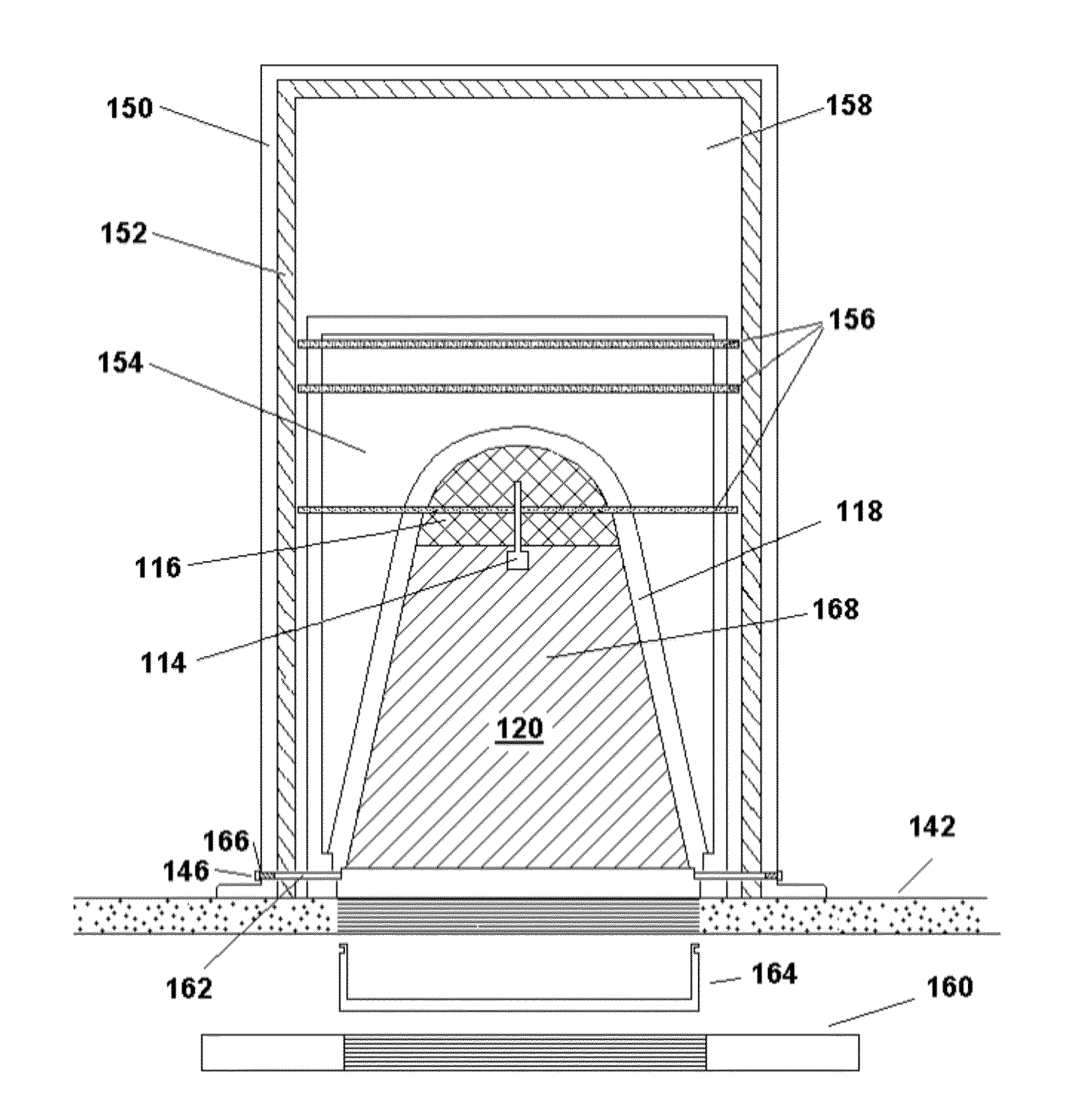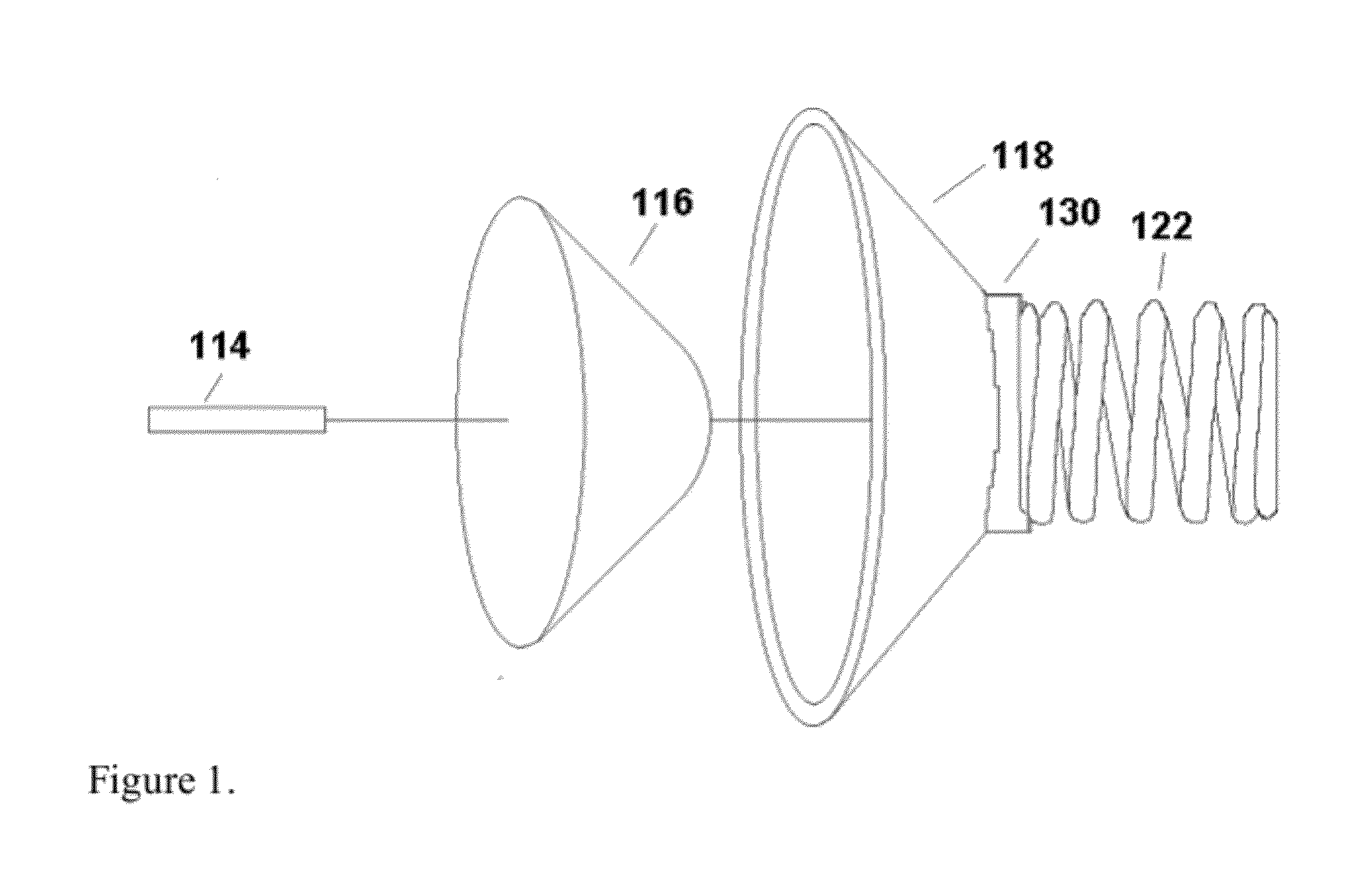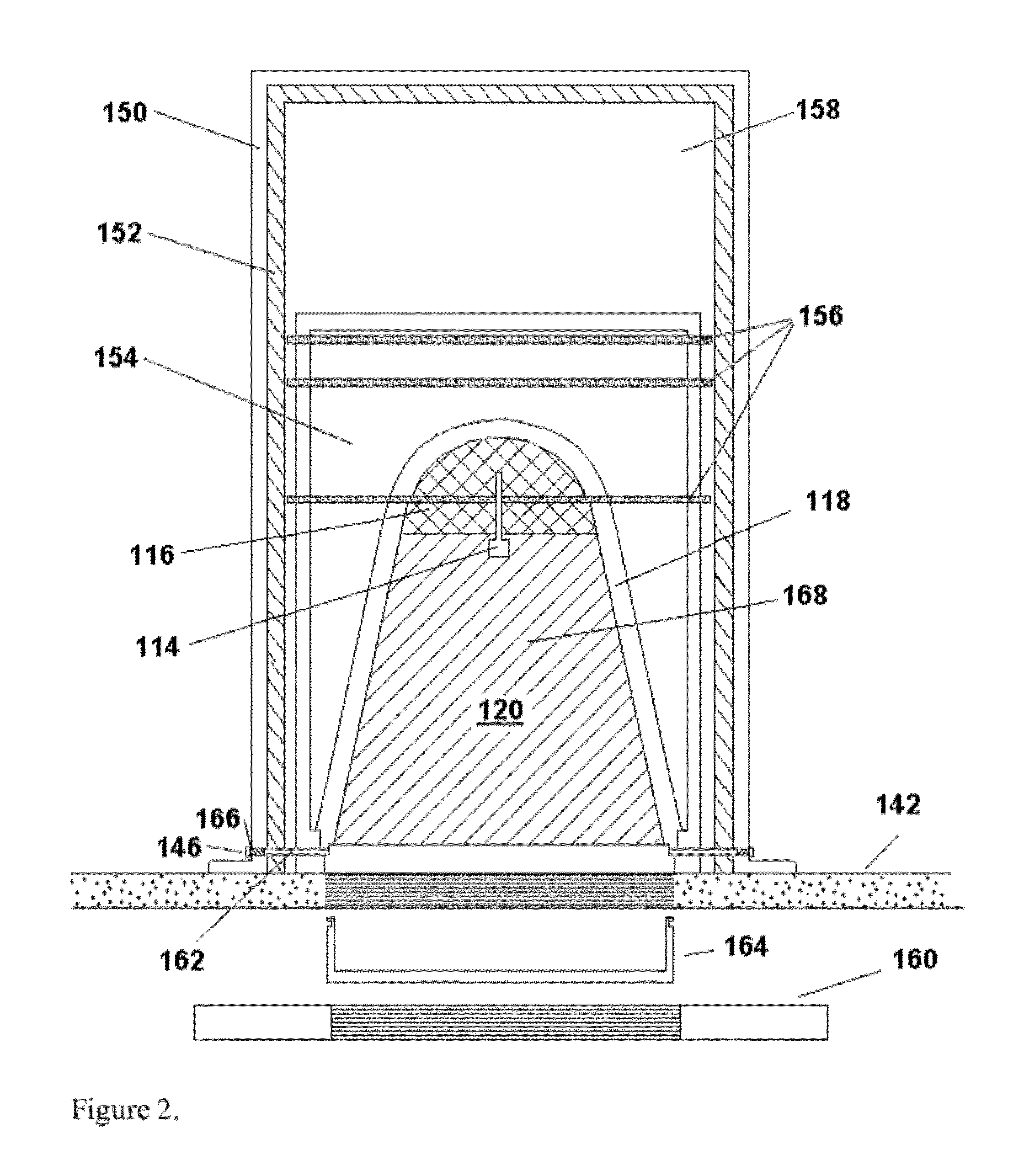System for Protecting Surfaces against Explosions
a technology for protecting surfaces and explosions, applied in the direction of reactive armour, ammunition fuzes, lighting and heating apparatus, etc., can solve the problems of increasing acquisition and operating costs, increasing the weight of vehicles, and increasing the cost of acquisition and operation, so as to achieve less agile and mission-capable vehicles
- Summary
- Abstract
- Description
- Claims
- Application Information
AI Technical Summary
Benefits of technology
Problems solved by technology
Method used
Image
Examples
Embodiment Construction
Preferred Embodiment—FIGS. 1-15
[0045]The present invention is a Surface Protection System (SPS). It can be applied to protect virtually any surface from unexpected external explosions, including vehicles. It can be retrofitted to existing vehicles to reduce their vulnerability and to increase the survivability of its occupants. More specifically, the current invention can be applied to a variety of military vehicles, ranging from Humvees (HMMWVs) and tractor-trailers to mine-resistant ambush-protected vehicles (MRAPs).
[0046]The principle underlying this invention is that the response time and force of a controlled counter-explosion is potentially sufficient to attenuate the shockwave and the effects of shrapnel from an IED. The basic component of this invention is the counter-explosive device (CED); the explosive device is an old technology, but here it is adapted to a new use. An example of a CED is shown in FIG. 1. The CED consists of a cake of high-explosive material (116), such ...
PUM
 Login to View More
Login to View More Abstract
Description
Claims
Application Information
 Login to View More
Login to View More - R&D
- Intellectual Property
- Life Sciences
- Materials
- Tech Scout
- Unparalleled Data Quality
- Higher Quality Content
- 60% Fewer Hallucinations
Browse by: Latest US Patents, China's latest patents, Technical Efficacy Thesaurus, Application Domain, Technology Topic, Popular Technical Reports.
© 2025 PatSnap. All rights reserved.Legal|Privacy policy|Modern Slavery Act Transparency Statement|Sitemap|About US| Contact US: help@patsnap.com



